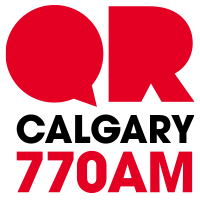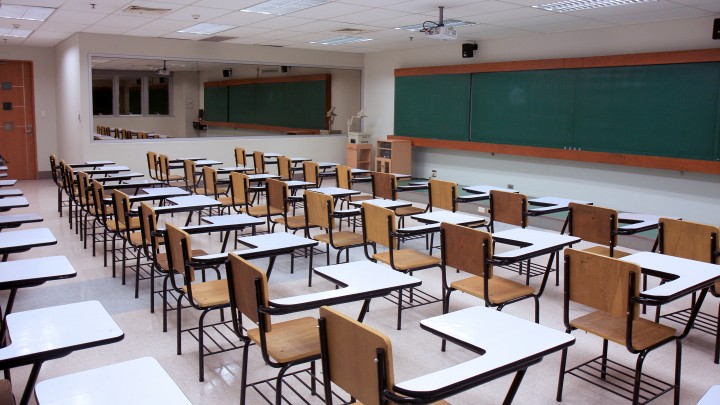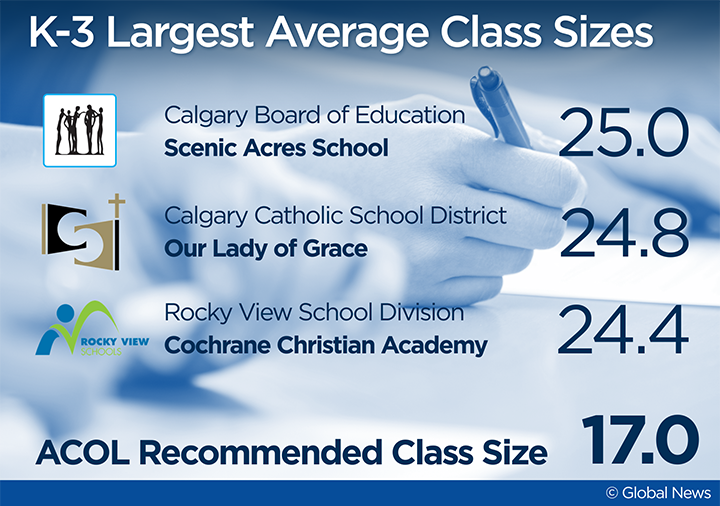If it feels like your kid’s elementary school class size is bigger than it should be, you’re probably not wrong.

Data for the 2016/17 year shows 91 per cent of Calgary-region schools offering programs in kindergarten through Grade 3 have average class sizes in excess of the recommended 17 children per class as set out in the 2003 Alberta Commission on Learning (ACOL) report.
“I find it quite disturbing,” said Alberta Teachers’ Association president Greg Jeffrey. “This is the place where class size becomes most important. This is a solid start for all of these kids in Alberta.”
LISTEN: Michael Swaagstra with the Frontier Centre on Alberta class sizes
The solution, Jeffrey contends, is spending more money to hire more teachers.
“Certainly this is going to cost some money in order to accomplish it, but we’re talking about the children of Alberta and the future of our province is at stake here.”

Get breaking National news
READ MORE: Alberta NDP promises to reduce class sizes, create school lunch program
Education Minister David Eggen said his government has made investing in the classroom a priority by creating 1,000 new teaching positions over the last three years.
LISTEN: John Himpe shares details of his finding on Calgary Today
“This year, we’re pleased to see that many schools are using our new $75-million Classroom Improvement Fund to hire additional teachers and support staff,” Eggen said in a statement to Global News.
“Ultimately, school boards are in the best position to determine an appropriate balance between teacher staffing levels and other classroom support positions. That’s why we give them flexibility to determine class sizes and why there may be fluctuations from school to school.”
At the Calgary Board of Education (CBE), 134 of 150 schools exceeded the class size standard. The board’s Scenic Acres School has the largest average K-3 class size in the entire Calgary region, with an average of 25 children per class. That’s eight more than set out in the ACOL recommendation.
“The primary difficulty here is the teacher’s individual time with students,” Jeffrey said. “When you have eight more students you’re trying to get to, that shortens the time the teacher has to spend with each individual child.”
“This is where students could possibly fall through the cracks.”
For administrators, some of the challenges with meeting the ACOL class size targets can be mathematical.
“If I’m at a school and I have 42 kindergarten students, that’s a really awkward number,” said Sydney Smith, Area 6 director with the CBE. “If I make three classes, I’ve got about 13 or 14 students in a class. My other option is to go with two classes of 21.”
Smith said while it’s not financially feasible to have three smaller classes, it might make more sense to have two larger classes with additional help in the classroom.
“I think it’s important to understand principals make decisions about their class sizes based on space, resources, budget, number of students, the complexity of classes, all of those kinds of things.”
LISTEN: Alberta Teachers’ Association president on what larger class sizes mean for Alberta teachers
READ MORE: Calgary gets 4 new elementary schools, parent group says 2 communities were skipped over
The complexity of class makeup is also a concern for the Calgary Catholic School District, where 84 of the 90 K-3 schools showed average class sizes in excess of the recommended 17 students.
“Class sizes are one factor among many that impact student learning and as a district we work very hard to try and keep our class sizes reasonable,” the district said in a statement to Global News. “Our goal is that all students are championed and supported by their classroom teacher who understands their learning needs.”
“Situations will vary from school to school and the supports in place will depend on overall school profiles and individual learner profiles within a certain class. Our focus is to ensure that we equip both teachers and students with the supports they need to see success in the classroom.”
In the Rockyview district, 24 of 26 schools also exceeded the guideline.
Jeffrey said the ATA feels that as the province turns the corner from the economic downturn, investing more dollars in teaching positions would be a good use of dollars in the provincial budget.
“K-3 represents children’s start of their formal education where they receive their grounding in literacy and numeracy,” Jeffrey said. “Having lower class sizes would be extraordinarily valuable and make things a whole lot better as they move through our K-12 system.”














Comments